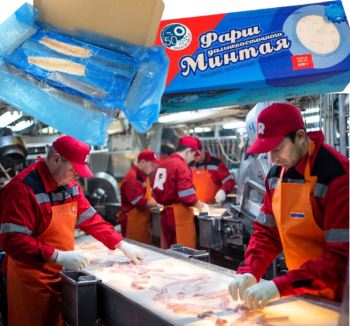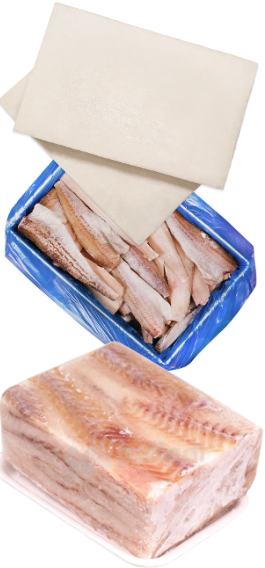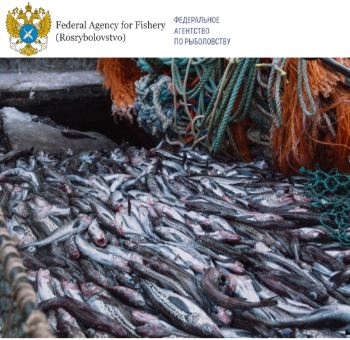|

Photo: Stockfile/FIS
Growing Demand for Pollock Products Drives Expansion of Russia’s Fishing Industry
 RUSSIAN FEDERATION
RUSSIAN FEDERATION
Tuesday, March 18, 2025, 10:00 (GMT + 9)
Pollock remains the cornerstone of Russia’s fishing industry, accounting for over 40% of the total national catch, according to Alexey Buglak, President of the Pollock Catchers Association (PCA).
 Despite challenging weather conditions in key fishing areas, the production of deep-processed pollock products, including fillets, minced meat, and surimi, has surged, reflecting both growing domestic demand and evolving market dynamics. Despite challenging weather conditions in key fishing areas, the production of deep-processed pollock products, including fillets, minced meat, and surimi, has surged, reflecting both growing domestic demand and evolving market dynamics.
In 2024, Russian fishermen produced 180,000 tons of pollock fillets, minced meat, and surimi—an increase of 4.5% from the previous year. The most significant growth was seen in surimi production, which jumped by 45% to 70,800 tons. The trend has continued into 2025, with total deep-processed pollock production increasing by 17% since the beginning of the year, reaching 7,600 tons. Notably, surimi production alone has risen by 41% in early 2025.
While Russia has traditionally focused on exports, domestic demand for pollock products has expanded significantly. In 2024, supplies of pollock fillets to the domestic market surged 2.6 times to over 46,000 tons, while pollock surimi saw a 1.9-fold increase to 21,000 tons. Mincemeat production also grew by 73%, reaching 8,000 tons. The industry is expected to maintain this momentum, with forecasts predicting surimi production could reach 85,000 tons by the end of 2025—13 times higher than five years ago.
However, unstable weather conditions in the Sea of Okhotsk have impacted overall pollock catch volumes, leading to a 10% decline compared to early 2024. Storms and ice fields have disrupted fishing operations, forcing fleets to adjust their strategies. Despite these setbacks, experts anticipate improved weather conditions will allow for an increase in fishing intensity. The daily pollock catch in the Sea of Okhotsk is expected to reach 9,000–10,000 tons during peak periods, with projections estimating a total catch of 800,000–850,000 tons for the "A" season. By mid-April, Russia’s overall pollock catch could surpass 1 million tons across the Far Eastern basin.
.png) In 2024, Russian fishermen set a record with a pollock catch of 1.998 million tons—a 2% increase from the previous year—solidifying Russia’s position as a global leader in pollock production. The share of pollock in Russia’s total national catch also rose to nearly 41%, surpassing the United States, which caught 1.35 million tons in the same period. In 2024, Russian fishermen set a record with a pollock catch of 1.998 million tons—a 2% increase from the previous year—solidifying Russia’s position as a global leader in pollock production. The share of pollock in Russia’s total national catch also rose to nearly 41%, surpassing the United States, which caught 1.35 million tons in the same period.
As Russia continues to enhance its processing capabilities and shift more supply toward the domestic market, the future of the industry appears strong. The steady expansion of deep-processing operations and the rising popularity of value-added pollock products underscore the sector’s resilience and potential for sustained growth.
Related news:


[email protected]
www.seafood.media
|



